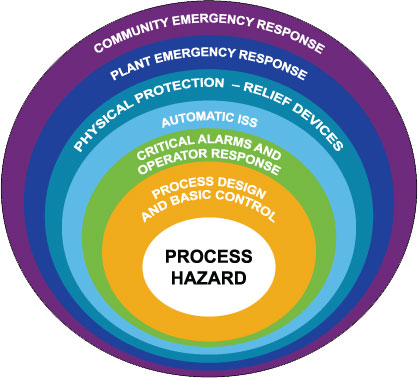Layers of Protection analysis ( LOPA)

-
Training TopicLayers of Protection analysis ( LOPA)
-
Learning PartnerNIST
-
LanguageEnglish
-
For queries, & Assistance
Layer of protection analysis (LOPA) is a special form of event tree analysis using fault propagation modelling to determine fairly accurately the frequency of an unwanted event.

LOPA Methodology
- Define the unwanted impact.
- Determine and list all of the initiating events that can cause the unwanted impact.
- Determine and list all the layers of protection that are available for preventing an initiating event from propagating into the unwanted impact.
- Quantify the frequency of the initiating event(s), based on historical data and engineering judgment.
- Quantify the effectiveness of the layers of protection in terms of probability of failure on demand (PFD), based on historical data and engineering judgment.
- Calculate the resulting frequency of the unwanted impact.
Benefits of LOPA
- Lowers the life-cycle cost of SIS.
- Supplements existing procedures (e.g., hazard matrix, risk graph).Adding LOPA does not require an organization to completely change other procedures.
- Neither excessively complicated nor time consuming.
- More accurate than purely qualitative estimates.
- Identifies potential gaps in the plant’s overall protection that can often be fixed very economically.
Role of NIST in conducting LOPA workshop
- Scheduling and planning the session
- In house Competent and Certified functional safety expert who has vast experience in Operation and technical scribe
- Verify thoroughly the process documents and conduct sessions in systematic manner
- Training of LOPA methodology to stakeholders
- Prepare comprehensive report with priority
